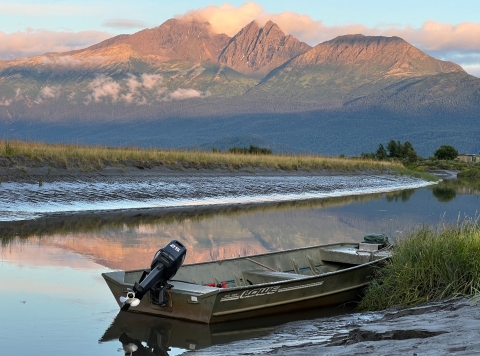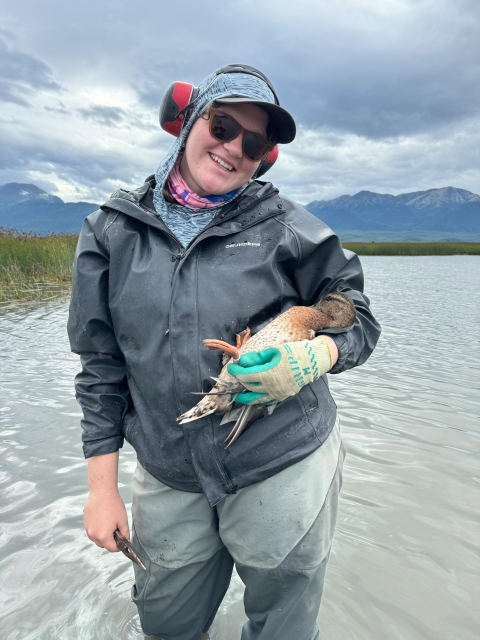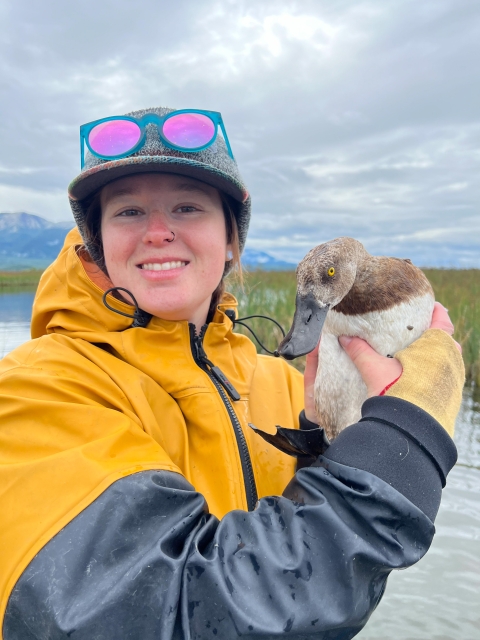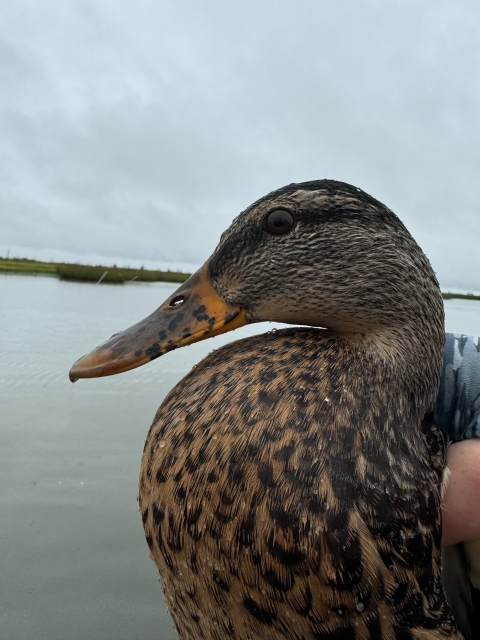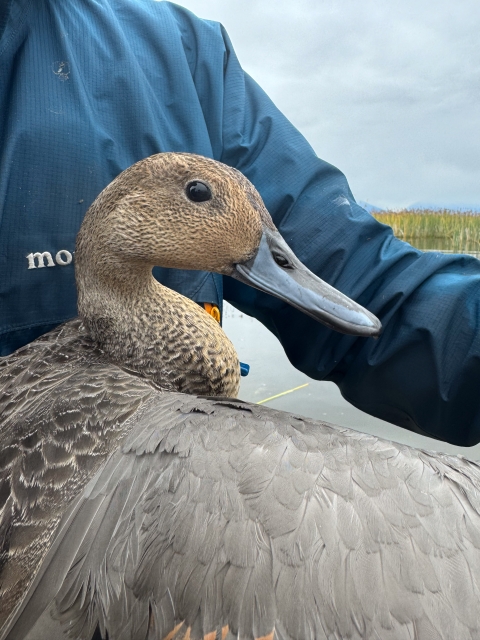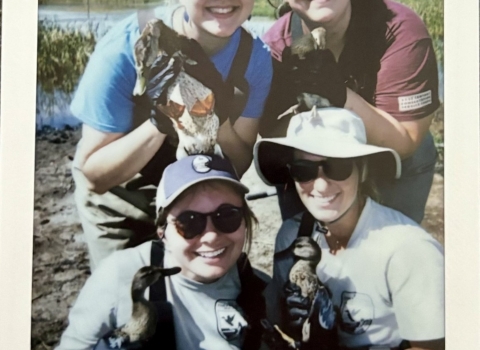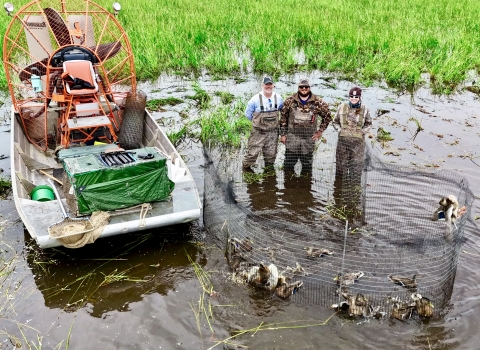August in Alaska means winter is just around the bend, already pockets of aspen and birch are donning their golden dresswear and fireweed has begun dispersing its cotton-like seeds over fire red leaves.
At the same time, thousands of ducks have begun staging in lakes throughout the south-central region, providing crucial rest stops before their big journey south.
My field partner Kela Vicich and I were tasked to band as many ducks as we could in 19 days. After sharing some waterfowl wisdom with us, wildlife biologists Dave Safine and Wade Schock departed, leaving Kela and I prepared for the journey ahead. Equipped with eleven swim-in traps baited with corn, a small mud boat, hundreds of bands, and our wits, we set out! First snowfall has already landed on Pioneer Peak and the rest of the Chugach range, and the air had a slight chill by the time we reached the first trap. With an unseasonably rainy summer compared to last year, we have no idea what to expect, other than ducks, of course.
Our focus species was mallards, and many of them move through the lake from other parts of the state. Unlike last year, which had a high number of young birds (ducklings and flighted juveniles) and an even mix of males and females, most of our ducks were adult male mallards. Just the demographic we’re looking for, as our banding efforts will aid in harvest rate estimates of mallards throughout the state. Mallards weren’t the only birds who ended up in our traps, a handful of other dabbling ducks such as this green-winged teal also found themselves in our hands and were released with a shiny new band.
As we spent more time in our little campsite nestled in the wetland, autumn’s travelers passed through like clockwork. It was a cacophony of avian instruments, all day and through the evening. Prattling yellowlegs greeted us in the morning, as did the bank swallows, chirping and playing effortlessly in the wind. The trumpeting of swans and bugling croaks of sandhill cranes passed over our tent every day at dusk, signaling bedtime. The gulls laughed throughout the day and quieted as the sun dipped below Mt. Susitna. The ducks, however, continued chatting well into the night. What secrets mallards share with each other in the late hours of the dark, we may never know. Midnight mallard gossip sessions were also held under the Aurora Borealis, which made an appearance in the middle of the trip, a northern reward for our hard work!
Over the course of the 19 days, Kela and I banded 460 mallards, a handful of diving ducks and one northern pintail. A very rainy first week resulted in a plethora of new ducks to band; they don’t call it “fowl weather” for no reason! A sunny and warm end of the trip resulted in high spirits, but less ducks.
Quickly fall was catching up to us, and every day we noticed less and less of our wetland denizens. Bank swallows and alder flycatchers departed quickly as more swans arrived at the lake. Gulls and their charismatic chuckling left soon after. Classic Vs of geese began serenading us overhead, a fine farewell from our feathered friends. It was another successful year duck banding full of unique and amazing experiences, and we couldn’t have done it without the support from Dave and Wade!

